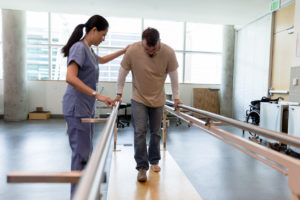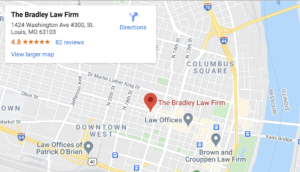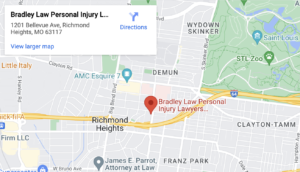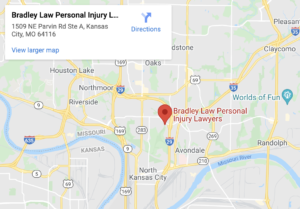
Even though you know that you did not cause the accident that resulted in your injuries, you must have evidence proving your case to recover compensation for injuries. Most personal injury claims in Missouri are based on negligence.
Negligence is the failure to act with the same level of care that a reasonable person would have used in the same situation.
Proving a party’s negligence requires that you show:
- The party owed you a duty of care
- The party breached the duty of care
- The breach of duty was the direct and proximate cause of your injuries
- You sustained damages because of the party’s conduct
Evidence is required to prove each legal element of the negligence claim. If you cannot present compelling and convincing evidence at trial, the jury may rule in favor of the defendant.
The Types of Evidence Presented in Court
Each accident case is different. Therefore, the evidence in your case may be different from the evidence in another case. However, there are certain types of evidence that are applicable in most personal injury cases.
Testimony
Several people may be called to testify at a trial, including the parties to the action, expert witnesses, and eyewitnesses. Each person is placed under oath before they answer any questions posed by the attorneys.
Physical Evidence
Physical evidence is any tangible object that relates to the case. For example, skid marks and damage to the vehicles may be used as physical evidence in an auto accident case.
Documentary Evidence
Any evidence contained in a document, video, audio recording, or photograph.
Circumstantial Evidence
Evidence that leads a person to make a reasonable assumption of a fact. The evidence only implies a fact. It does not offer direct proof of the fact.
Hearsay
Hearsay is an out-of-court statement offered as proof. It is generally not admissible in a court case, but there could be an exception.
What Evidence is Used in Personal Injury Cases?
Physical evidence, testimony, and documentary evidence are the most common types of evidence used in personal injury cases. Examples of evidence that might be used to prove fault and liability in a personal injury case include, but are not limited to:
Medical Records and Statements from Physicians
Your medical records are critical pieces of evidence in an accident case. Your medical records show the injuries sustained in the accident and the severity of your injuries.
Examples of medical records include:
- Ambulance, emergency room, and hospital records
- Physicians’ records and statements
- Records from nursing facilities and rehabilitation centers
- Medical bills
- Records from therapies, including physical, occupational, and vocational therapies
- Pharmacy records
- Imaging and lab tests
- Statements and records from specialists
Prompt medical care is necessary after an accident. The insurance company may deny your claim if you delay medical treatment after an accident. Failure to follow your treatment plan is another reason you could lose your case or risk receiving a much lower settlement amount.
Testimony by the Parties and Eyewitnesses
The parties involved in the case generally testify during a trial to explain their version of what occurred. In addition, an eyewitness may testify about what they saw and heard. In some cases, jury members give more credit to eyewitness testimony because these individuals do not have a stake in the trial’s outcome.
Expert Witness Testimony
Expert witnesses testify about specific matters relevant to your case. For example, an accident reconstructionist may explain how a car accident occurred. Medical experts testify about injuries and impairments. Economists may testify about the cost of future damages and losses.
Police Reports and Accident Reports
Reports by law enforcement agencies may contain information that might be admissible in court. The officer may need to appear to testify about the information in the report.
Videos and Photographs
Pictures of your injuries can help the jurors understand the extent of your injuries. Pictures of the accident show jurors what the scene of the accident looked like when the accent occurred. Traffic cameras or surveillance cameras may capture a car crash or other accident as it happens.
If possible, try to take photographs of the accident scene and make a video to preserve evidence.
Wage and Employment Records
You may be entitled to compensation for lost wages after an accident. However, you need to prove how much money you lost because of the accident and injury.
Evidence may include:
- Paystubs
- Tax returns
- Income statements
- Letter from your employer
- Bank records
If you sustained a permanent injury, you might be entitled to compensation for future loss of income. You would likely need evidence from medical experts and financial experts to prove your claim for future loss of income.
If you’ve been injured due to someone else’s carelessness, contact a personal injury attorney in St. Louis, MO so you can understand what evidence could help you prove your case. At Bradley Law Personal Injury Lawyers we offer free consultations.




